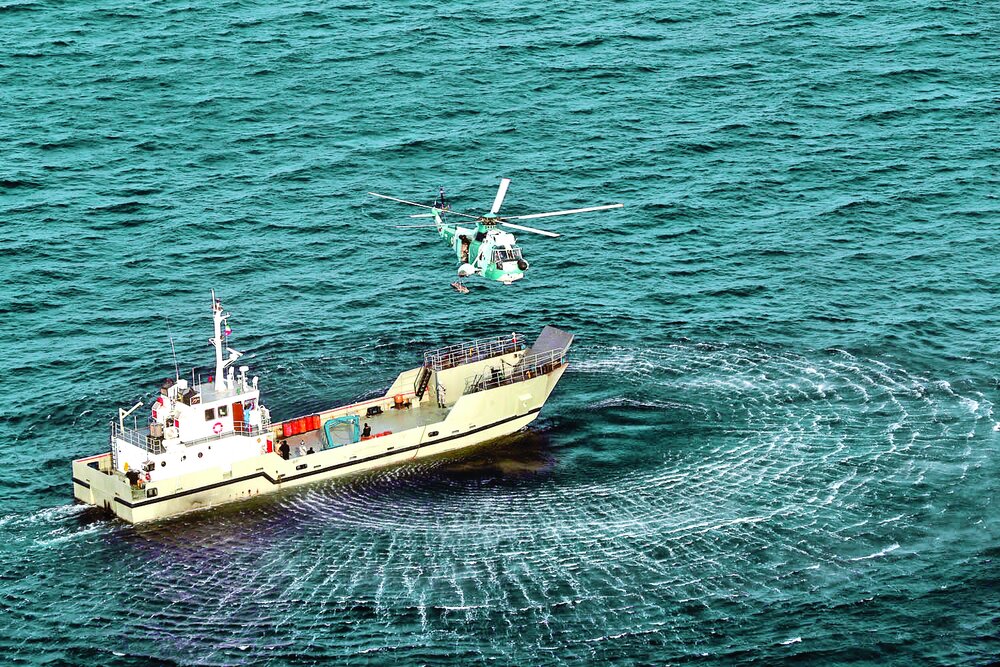Iran, Russia, China demonstrate proximity through naval drill

TEHRAN — On Friday morning, the bell rang for one of the biggest maritime drills in the history of the powerful triangle of Iran, Russia, and China.
The joint drill, which is called “naval security belt combined war game 2022,” covers an area of 17,000 square kilometers.
The drill involves marine and airborne units of the Iranian Navy, the Islamic Revolution Guards Corps (IRGC) Navy, and flotillas from the Russian Pacific Fleet and the Chinese Navy.
“Together for peace and security,” is the motto of the drill, Admiral Mostafa Tajeddini, the drill spokesman, announced on Thursday.
Tajeddini added the drill is aimed at improving security of international maritime trade, countering piracy and maritime terrorism, exchange of information in naval rescue and relief operations, and exchange of operational and tactical experiences.
This is the third joint naval drill between Iran, Russia, and China.
After Iranian President Seyyed Ebrahim Raisi arrived in Moscow on Wednesday, media outlets reported that a joint naval drill will soon be held between Iran, Russia, and China.
Interestingly, the three countries involved in the drill are enjoying close political relationship. Iran’s Foreign Minister Hossein Amir Abdollahian visited China on January 13. He held extensive talks with his Chinese counterpart, Wang Yi.
The outcome of the visit was the implementation of the strategic 25-year cooperation document between Iran and China.
In the meeting, Amir Abdollahian reaffirmed Iran’s support for the One China Policy and announced Iran’s readiness to expand all-out ties with China.
For his part, Wang said that the 25-year partnership is “highly important” and said Tehran and Beijing’s agreement to start implementing the deal is a significant development that will pave the way to fundamentally transform bilateral ties.
Similarly, Iran’s president went to Russia and had a lengthy meeting with his Russian counterpart, Vladimir Putin. He also addressed the Russian State Duma, and met with prominent Russian economic actors.
In the meeting with the Russian leader, Raisi pointed to Iran’s resistance against the Western pressure since the 1979 Islamic Revolution, saying, “We have been standing against the West for more than forty years and we will not tie the country's progress to sanctions.” Putin also hailed cooperation between Russia and Iran in the fight against terrorists in Syria.
“Iranian and Russian support has helped overcome terrorist threats on the Syrian soil,” the Russian president noted.
As talks are underway in Vienna to remove illegal sanctions imposed on Iran, the visits by Iran’s top officials are highly significant. The intimacy of Iran, Russia, and China has benefitted Tehran greatly in the negotiations table, aiding the speed of talks. However, Iran has expressed its dissatisfaction with the slow speed of negotiations by Europeans, and has called for practical initiatives.
Among the important achievements of these visits, one stands out. China, Iran, and Russia are entirely on the same page in regard to the Vienna talks. The two countries expressed their ultimate support over Iran’s legitimate demands for guarantees from the United States, and called for an end of the “counter-productive” sanctions of the United States.
This drill shows how close the triangle of power is, and nothing can break the unity between the three powerhouses.
Leave a Comment